Prediction of Remaining Fatigue Life of In-Service Bridge Cranes
Abstract
:1. Introduction
2. Fatigue Characteristic Analysis
2.1. Determining Fatigue Failure Point Locations
2.2. Static Structural Analysis
2.3. Stress–Time History Simulation of Fatigue Failure Point
3. Rainflow Counting Method and Stress Spectrum Acquisition
4. Fatigue Residual Life Prediction of Bridge Crane
4.1. Fatigue Crack Expansion Correction Equation
4.2. Residual Life Prediction Equation for Constant-Amplitude Loading
4.3. Residual Life Prediction Equations for Variable-Amplitude Loads
4.4. Residual Fatigue Life Prediction Process
5. Project Examples
6. Conclusions
Author Contributions
Funding
Institutional Review Board Statement
Informed Consent Statement
Data Availability Statement
Conflicts of Interest
References
- Maeda, Y.M.; Yoshimi, C.D.; Yoshihisa, E. Stress spectrum of the jib of rough terrain crane carrying a load. JSME 2003, 12, 257–258. [Google Scholar]
- Fengyi, L.; Shuang Wang, B.; Gening, X. An improved method for constructing crane load spectrum v-SVRM prediction model. J. Eng. Des. 2015, 22, 412–419. [Google Scholar]
- Wang, A.; Xu, G.; Gao, Y. Acquisition of random stress spectrum and fatigue remaining life estimation of bridge cranes. Chin. J. Mech. Eng.-En. 2012, 48, 192–198. [Google Scholar] [CrossRef]
- Xiong, L.; Li, D. Simulation estimation of crane structural life. JSJU 2002, 3, 265–268. [Google Scholar]
- Ge, Z.; Huang, X. Predicting fatigue performance of asphalt mixtures using damage mechanics theory. J. Transp. Eng. 2003, 3, 40–42+51. [Google Scholar]
- Yan, Z.; Liu, C. Fatigue life estimation of welded structures based on the nominal stress method. China Water Transport. 2021, 21, 43–44. [Google Scholar]
- Ding, G.; Zhu, H.; Wu, J.; Guan, T.; Dong, H. Fatigue life analysis of key components of spring-operated mechanism based on local stress-strain method. Proc. CSEEE 2023, 1, 1–9. [Google Scholar]
- Xiong, W.; Xiang, X.; Yu, Q. Estimation of fatigue life of wire ropes for overhead cranes based on local stress-strain method. Mec. Sci. Tech. 2015, 34, 47–50. [Google Scholar]
- Zhang, L.; Sun, Z.; Zhang, F. Estimation of fatigue life and crack size of submarine pressure-resistant hulls by fracture mechanics method under random loading. Ship. Sci. Tech. 2006, 28, 27–31. [Google Scholar]
- Mai, J.; Li, H.; Pei, W. Study of concrete surface temperature cracking by fracture mechanics method. J. Hyd. Eng. 2002, 77, 31–36. [Google Scholar]
- Guo, J.; Sun, G. Estimation of fatigue life of welded steel structures by fracture mechanics method. Hoisting Conveying Mach. 1999, 10, 9–12. [Google Scholar]
- Yao, C.; Wang, Y.; Yang, W. Reliability Study of Metal Structure of Bridge Crane Based on Damage Tolerance Theory. Heat Treat. Met. 1958, 1, 453–456. [Google Scholar]
- Zhao, S. Fatigue Resistant Design Manual, 2nd ed; Machinery Industry Press: Beijing, China, 2015; pp. 358–391. [Google Scholar]
- Jiang, B. Reliability Study of Metal Structure of Bridge Crane Based on Damage Tolerance Theory. J. Taiyuan Univ. St. 2012, 13, 1–7. [Google Scholar]
- Zhou, Z. A review of non-destructive testing methods for mechanical cracks. EME 2017, 10, 1138–1143. [Google Scholar]
- Wu, B. Application of non-destructive testing technology in lifting machinery safety inspection. Sci. Technol. Innov. 2022, 9, 171–173+176. [Google Scholar]
- Huang, J. Non-destructive testing in the inspection of box girder cranes. Guangdong Shipbuild. 2008, 3, 71–72. [Google Scholar]
- Wang, C.; Zhang, B. Fatigue cracks in box girders of overhead cranes and their remaining life. Mech. Des. Res. 2014, 30, 144–147. [Google Scholar]
- Xu, G.; Zuo, B. Research on fatigue residual life assessment method of crane structure. Chin. J. S. Sci. 2007, 17, 126–132. [Google Scholar]
- Yang, X.; Chen, C. Fatigue and Fracture, 3rd ed.; Huazhong University of Science and Technology Press: Wuhan, China, 2018; pp. 104–109. [Google Scholar]
- National standard GB/T3811-2008 Crane Design Code; Beijing Crane Transport Machinery Design and Research Institute: Beijing, China, 2012.
- Wang, S.; Jia, C.; Xu, G. Experimental study on Variable amplitude fatigue of box girder of bridge type crane. J. Taiyuan Univ. Sci. Technol. 1996, 17, 51–56. [Google Scholar]
- Cheng, W.; Wang, J. Simulation Estimation of Fatigue Crack Extension Life of Bridge and Gantry Cranes. J. L. Trans. Mach. 2001, 2, 1–4. [Google Scholar]
- Li, S. Mechanical Fatigue and Reliability, 1st ed.; Science Press: Beijing, China, 2006; pp. 123–128. [Google Scholar]
- Cheng, J.; Zhao, S. Mechanics of Fracture, 1st ed.; Science Press: Beijing, China, 2008; pp. 57–99. [Google Scholar]
- Li, Y. Effect of stress concentration factor on tensile fatigue properties of low carbon martensite. Mater. Mech. Eng. 1984, 23, 3–9. [Google Scholar]
- Zhang, Q.; Wang, H.; Hu, N. Research on damage and fatigue life prediction of the main girder of gantry crane under hoisting load. J. Eng. Des. 2015, 22, 461–468. [Google Scholar]
- Wang, A.; Xu, G.; Yang, P.; Gao, Y. Bridge Crane Lift Load Distribution Fitting and Inspection. J. Mech. Ste. 2011, 33, 921–926. [Google Scholar]
- Pan, C. Fatigue performance of box-shaped main girders of overhead cranes. Hoisting Conveying Mach. 1984, 1, 17–36. [Google Scholar]
- Ma, J.; Lv, G. An objective quantity describing the length of the initial crack at the notch root. Mach. Sci. Technol. 1997, 6, 94–97. [Google Scholar]
- Liu, B.; Zhuang, D.; Qiu, J. Preparation of load spectrum of coal mining machine haulage system based on rainflow counting method. Coal Tech. 2011, 42, 219–223. [Google Scholar]
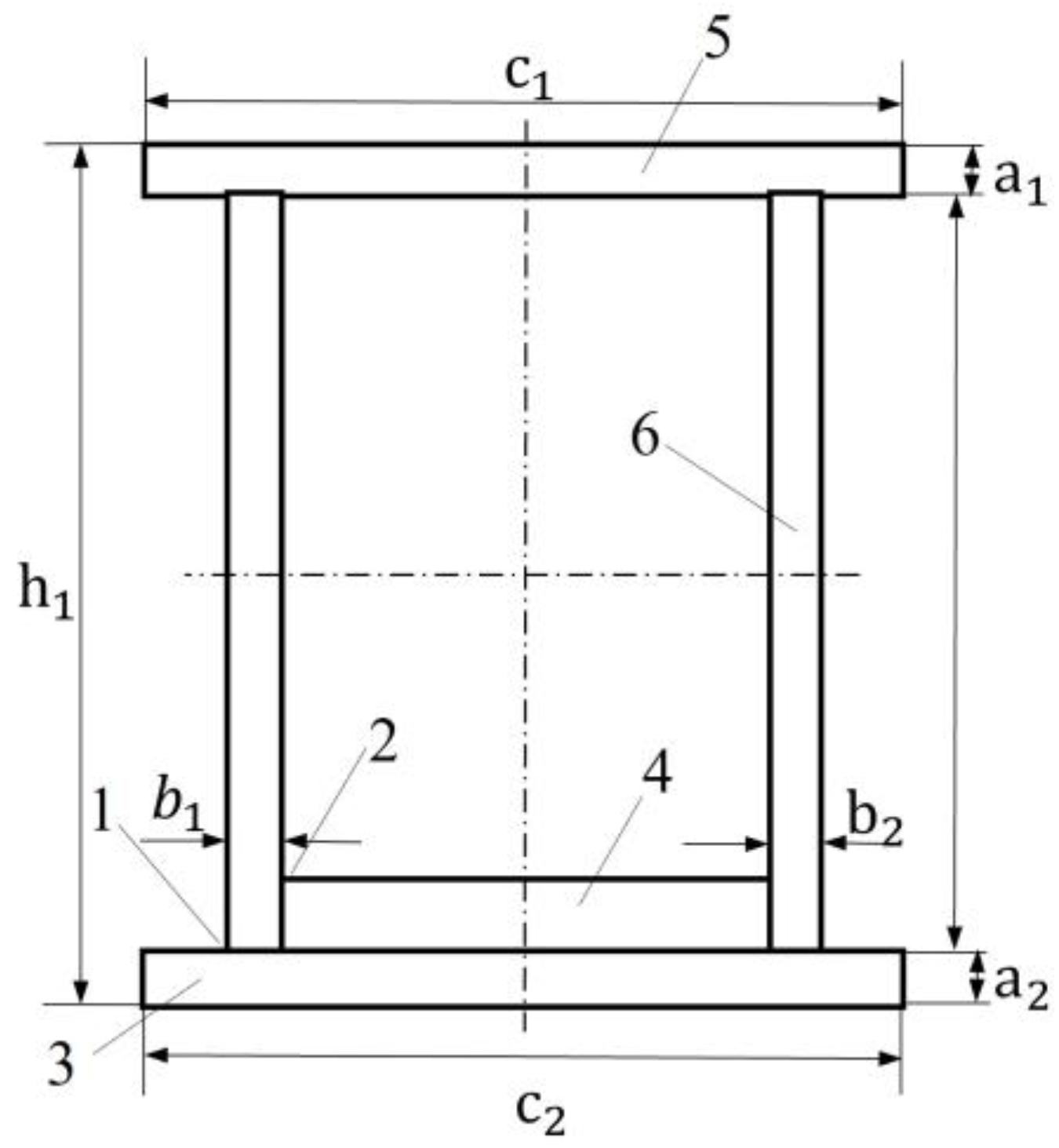


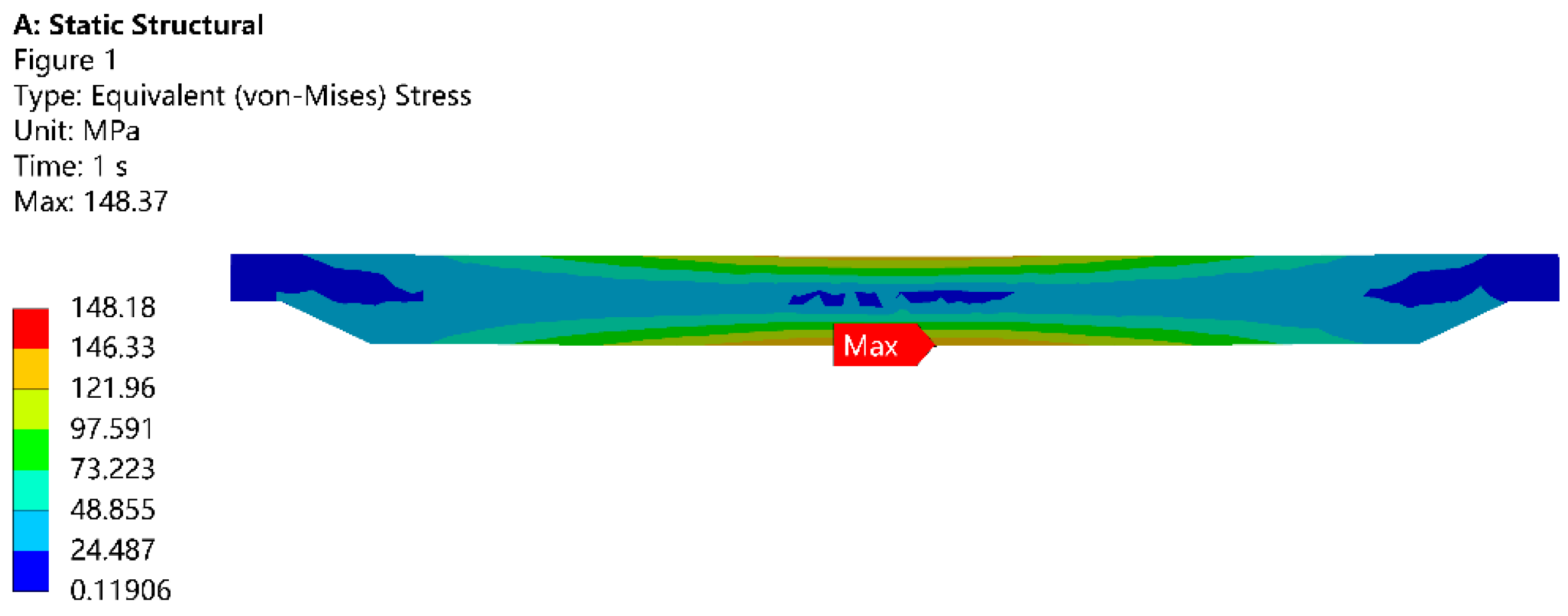
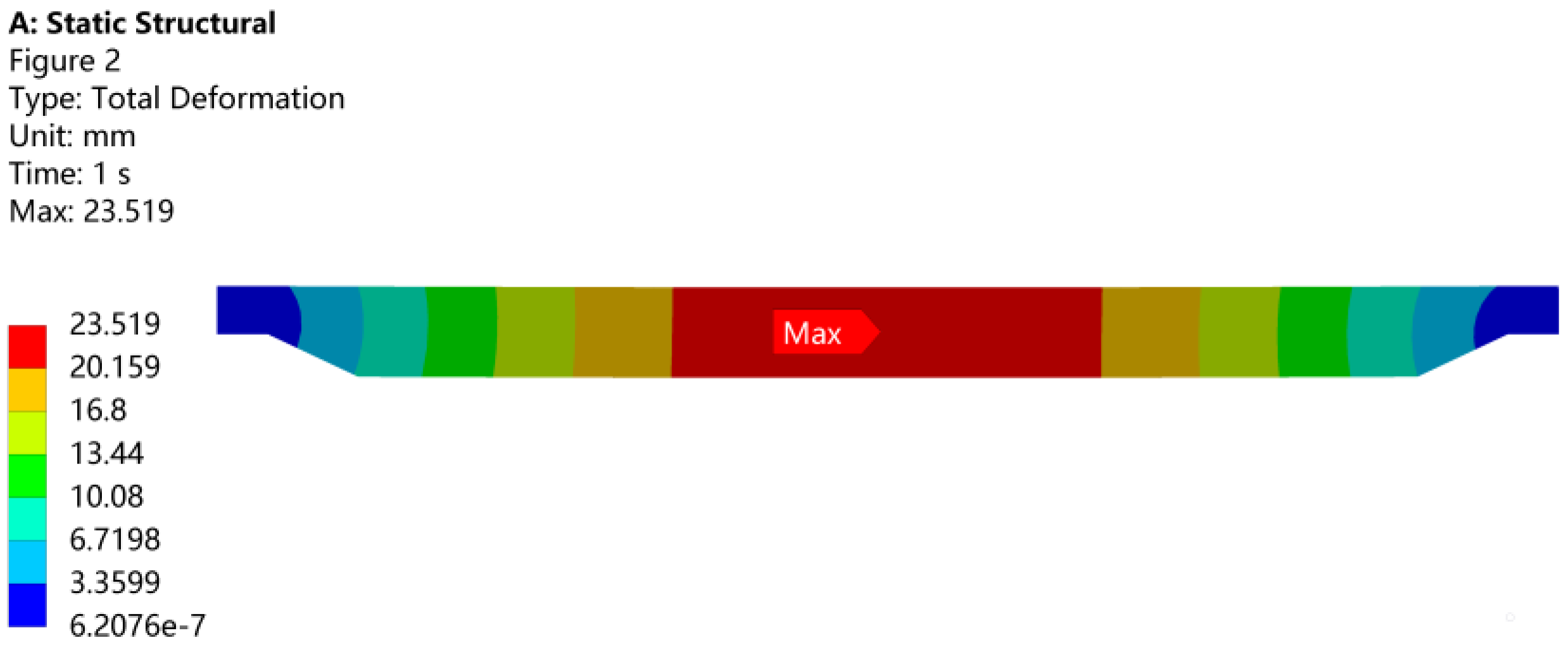


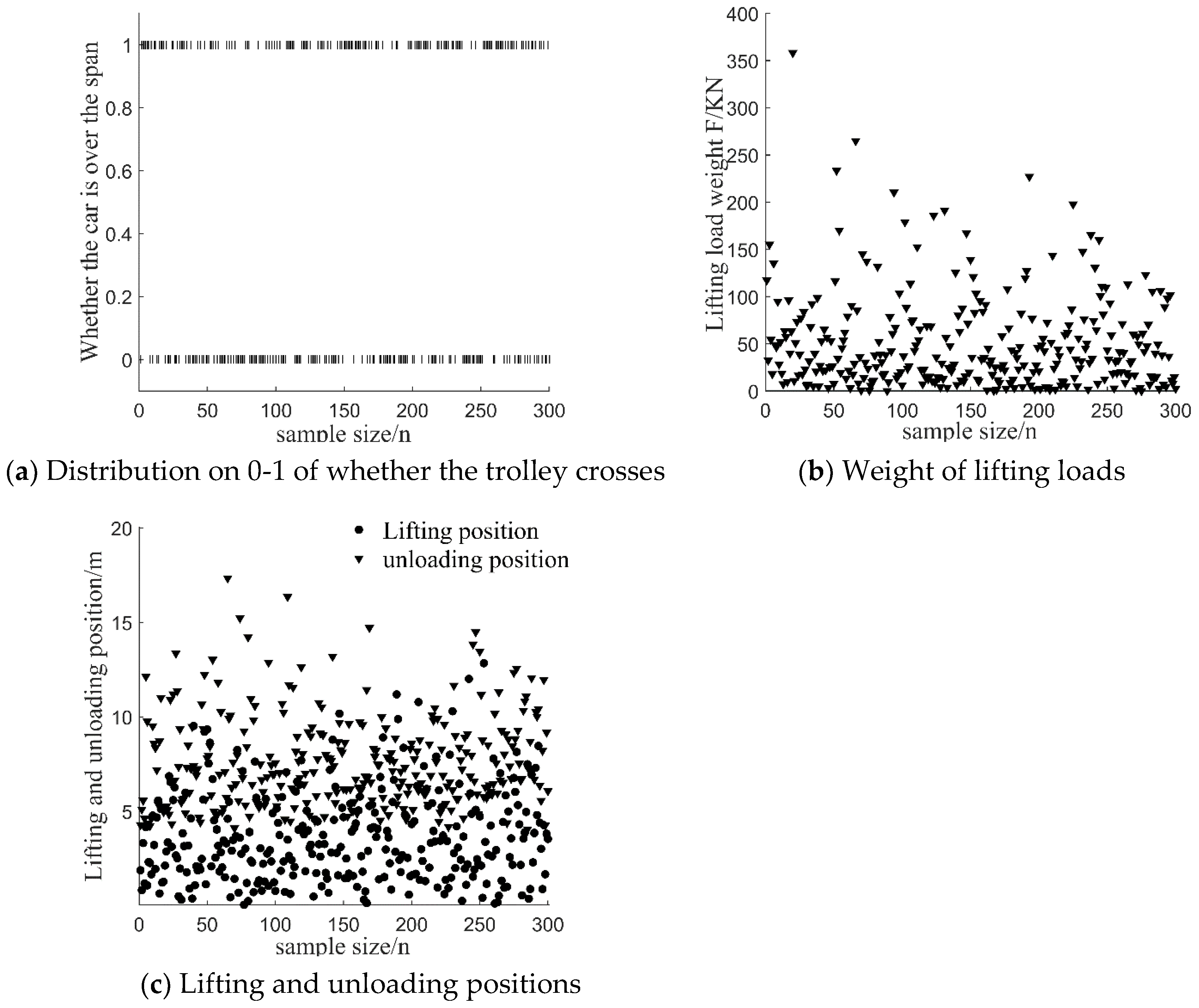
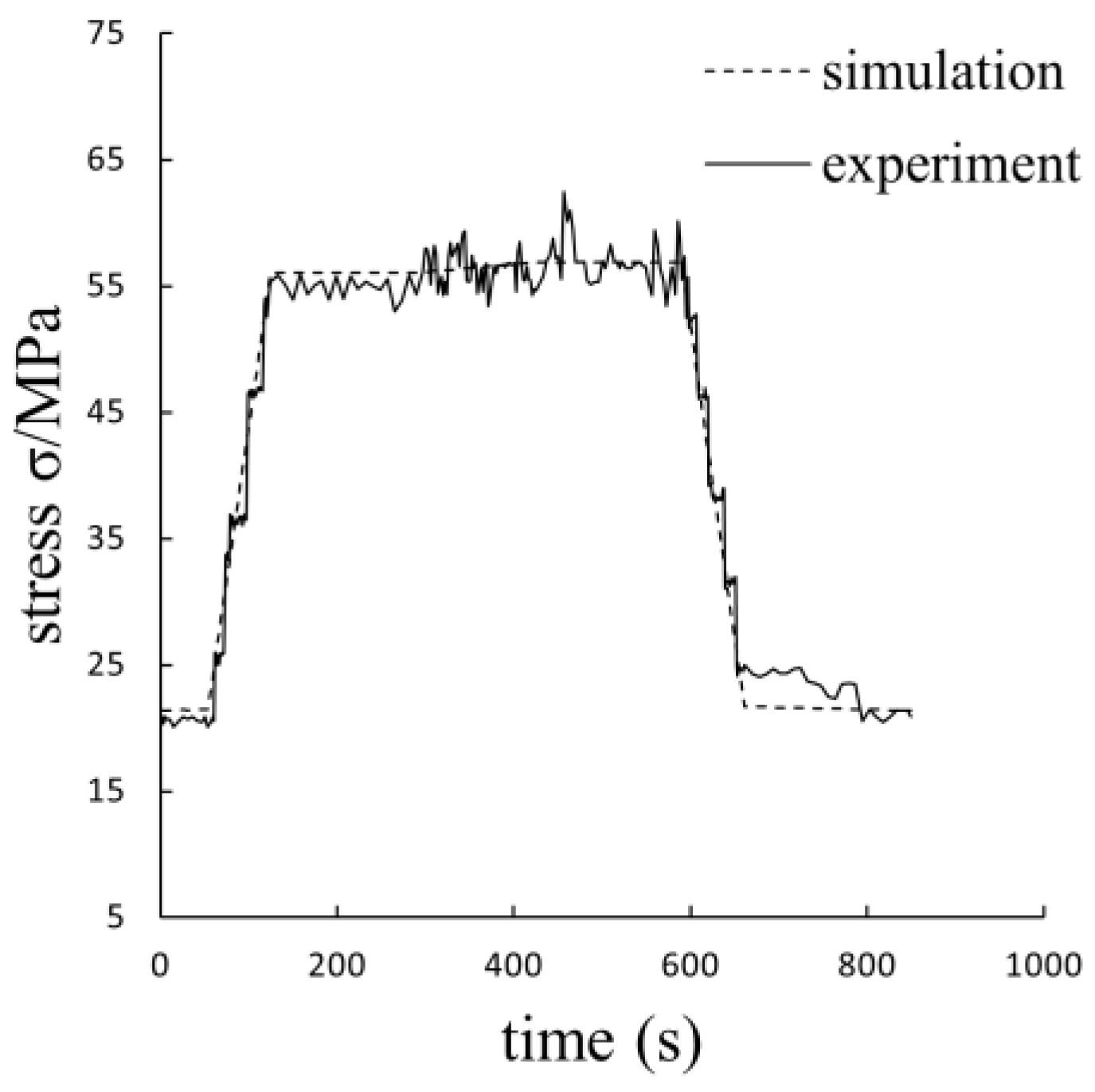
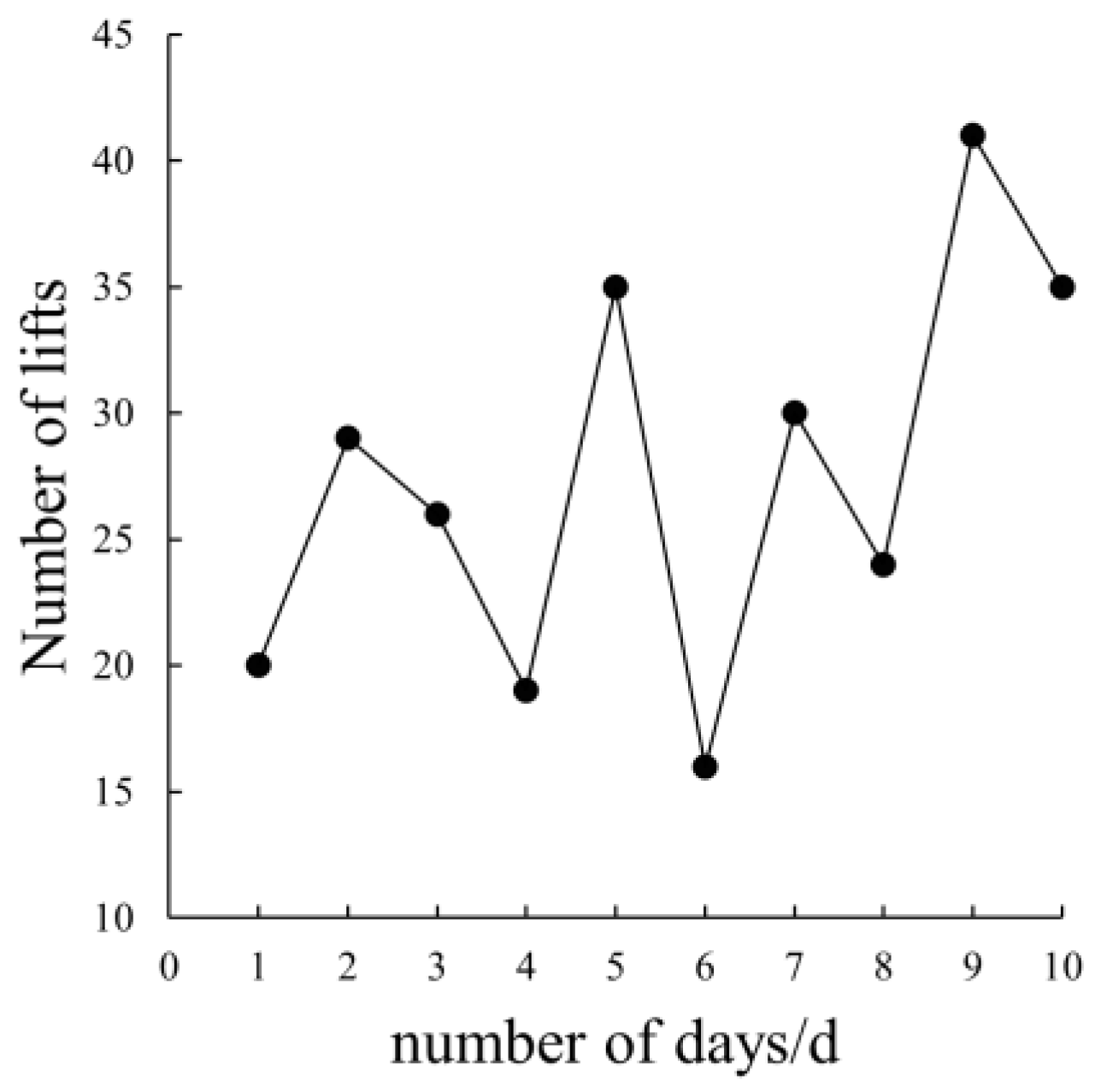

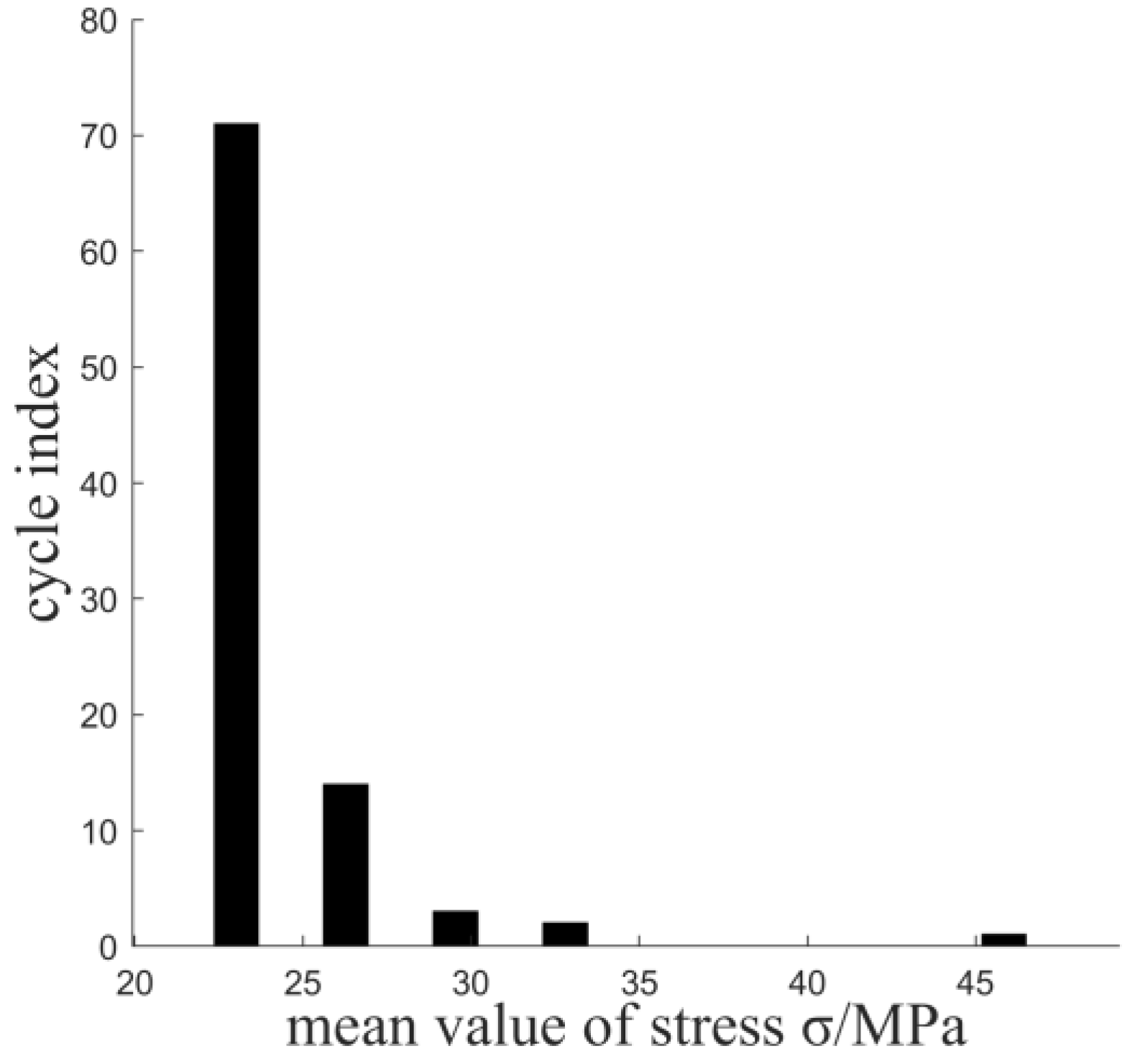
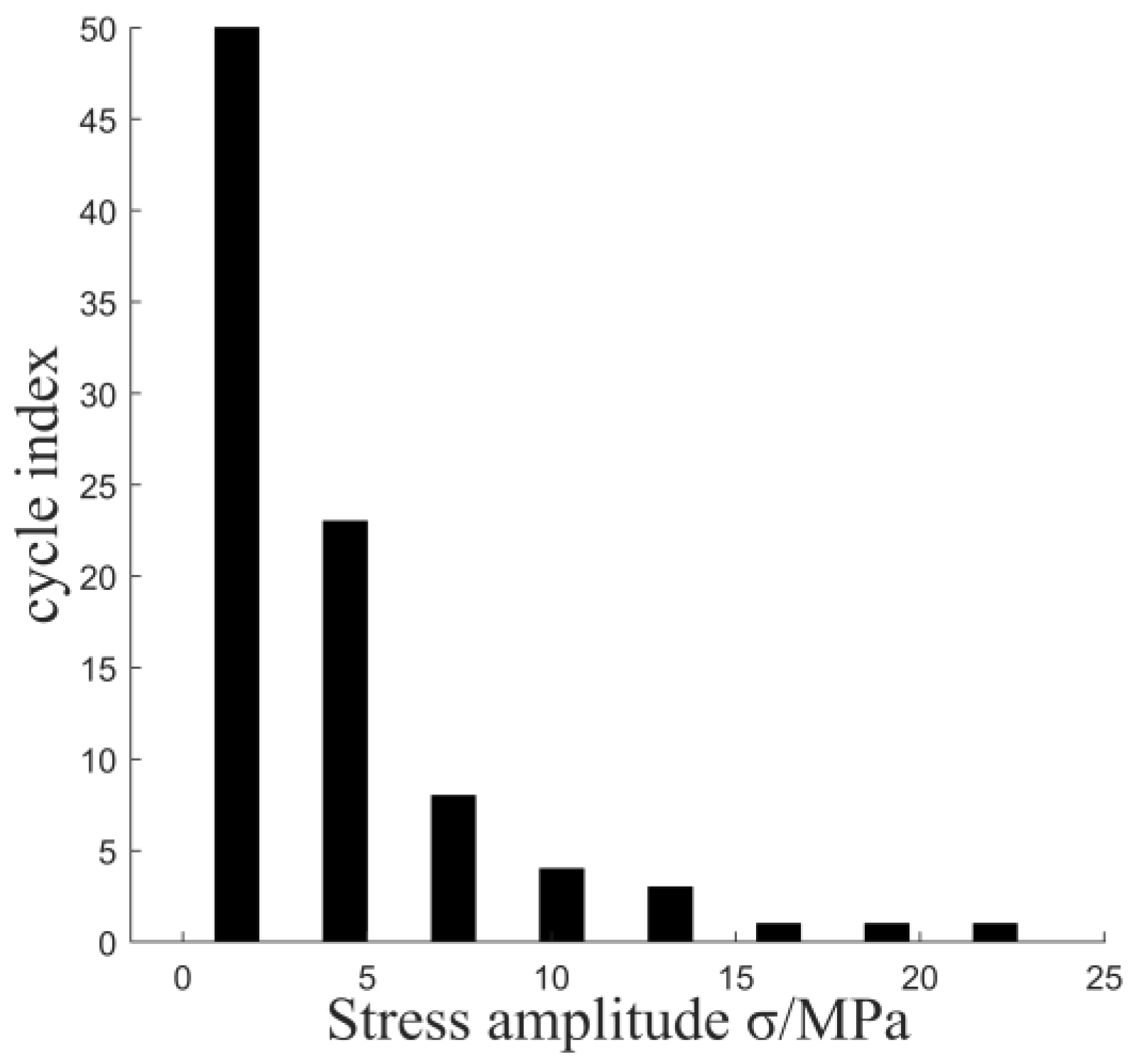
| Yield Strength | ||||
|---|---|---|---|---|
| 7.85 | 2.1 × 105 MPa | 0.3 |
| Characteristic Parameter | Maximum Likelihood Estimated Parameter Values | ||
|---|---|---|---|
| Lifting weight | α = 7.960 | β = 0.926 | γ = 3.330 |
| Lifting position | α = 6.210 | β = 2.054 | 0 |
| Unloading location | α = 6.314 | β = 1.963 | 0 |
| Whether the car is over the span | α = 0.586 | 0 | 0 |
| Parameter | Simulation Result | Test Results | Inaccuracies |
|---|---|---|---|
| number of cycles | 231,501 times | 210,331 times | 9.145% |
| remaining life | 25.37 years | 23.05 years |
Disclaimer/Publisher’s Note: The statements, opinions and data contained in all publications are solely those of the individual author(s) and contributor(s) and not of MDPI and/or the editor(s). MDPI and/or the editor(s) disclaim responsibility for any injury to people or property resulting from any ideas, methods, instructions or products referred to in the content. |
© 2023 by the authors. Licensee MDPI, Basel, Switzerland. This article is an open access article distributed under the terms and conditions of the Creative Commons Attribution (CC BY) license (https://creativecommons.org/licenses/by/4.0/).
Share and Cite
Li, Y.; Jin, A.; Dai, Y.; Yang, D.; Zheng, B. Prediction of Remaining Fatigue Life of In-Service Bridge Cranes. Appl. Sci. 2023, 13, 12250. https://doi.org/10.3390/app132212250
Li Y, Jin A, Dai Y, Yang D, Zheng B. Prediction of Remaining Fatigue Life of In-Service Bridge Cranes. Applied Sciences. 2023; 13(22):12250. https://doi.org/10.3390/app132212250
Chicago/Turabian StyleLi, Yun, Afang Jin, Yong Dai, Dexin Yang, and Bin Zheng. 2023. "Prediction of Remaining Fatigue Life of In-Service Bridge Cranes" Applied Sciences 13, no. 22: 12250. https://doi.org/10.3390/app132212250




